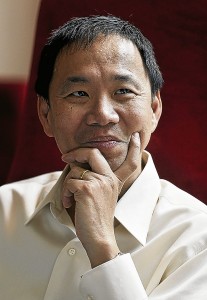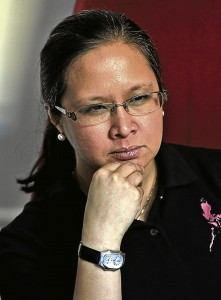Alex Y. Vergara
Danilo Casimiro, the only Filipino scientist who was part of the team that worked on Gardasil, the world’s leading vaccine against the human papillomavirus (HPV), is now busy working with colleagues on a vaccine to help prevent dengue.
Casimiro flew to Manila recently from West Point, Pennsylvania, where a number of Merck’s state-of-the-art laboratories and manufacturing plants are located, to give a series of talks to local pediatricians and gynecologists/ obstetricians about the need to address HPV at a young age through a series of vaccinations.
A magna cum laude with a BS Chemistry degree from the University of the Philippines Diliman, Casimiro later took postgraduate and doctorate studies in biochemistry and chemistry at the California Institute of Technology in Pasadena.
He holds the distinction of being the only Filipino scientist in Merck’s vaccine discovery department, composed of close to 90 people.
Second-generation drug
“To be honest with you, I was involved in Gardasil more on the tail-end,” the soft-spoken Casimiro said. “But, obviously, after Gardasil’s licensure, there were more studies that needed to be conducted.”
And those studies have led Merck to work on a second-generation HPV vaccine that works not only on four, but nine types of HPV. It’s now on its “phase three” or late-stage development.
It may be the gold standard in HPV vaccines today, but Gardasil, which was first introduced in the market in 2006, only covers 70 percent of HPVs, which cause cervical cancer among women. In effect, there are still so-called high-risk HPV types that aren’t covered by Gardasil.
“The second generation [Gardasil] adds five more types, which brings the coverage to 87 percent,” said Casimiro.
According to a Center for Diseases Control fact sheet, HPV is the most common sexually transmitted infection among sexually active men and women. The more than 40 types of HPV can cause anything, from benign but unsightly genital warts to life-threatening cancers such as cervical, anal, rectal, penile and even cancer of the oropharynx (back of throat).
Even monogamous couples who have had previous relationships are still at risk, as the virus, even if acquired from a previous sex partner and remains inactive in the body, can still be passed on to a current sex partner.
In most instances, as long as your immune system isn’t compromised, the body is eventually capable of neutralizing the virus by itself. But there are certain types of HPV that are resilient to the body’s immune system. These are the ones that could pose health problems to the individual later on.

In the Philippines, Gardasil, which comes in three shots ideally administered within a six-month period, is given to boys and men 9-26 years old, and girls and women 9-45 years old.
Age disparity
Why is there a need to give the vaccine early, and why the age disparity between men and women?
The immune system Gardasil brings about is better on a young person, even though he or she may not yet be sexually active. It’s just the way the body’s immune system works, said Dr. Ina Crisologo, an obstetrician-gynecologist and one of Merck’s medical advisers in the Philippines.
“In the Philippines, we have approval to make Gardasil available to girls as young as nine,” said Crisologo. “I’m not aware of any vocal opposition to giving the vaccine at such a young age.”
“As you age, you become less responsive to vaccines,” Casimiro added. “It has been shown for HPV, but I think it can apply generally.”
Certain consequences of HPV on males, particularly genital warts, can be acquired at any age. But studies Merck conducted are limited to the 9-26 age group.
“There may be some doctors who dispense Gardasil to male patients older than 26, but this is considered off-label,” said Crisologo. “Patients can just be informed that scientific evidence was based only on a specific population belonging to a specific age group.”
In other words, because of the absence of additional tests, it hasn’t been proven to be beneficial to people beyond certain ages. The same condition applies to women. Gardasil’s full efficacy has also been proven with the completion of three shots.
The way Casimiro sees it, Gardasil has revolutionized the market in more ways than one.
“Now you have adolescent and a young adult market, which before wasn’t very robust for vaccine manufacturers,” he said.
No stumbling block
As for his being a Filipino, it never became an issue or a stumbling block in his 15 years at Merck.
“One thing good about Merck is that they provide you with opportunities regardless of your racial origins,” he said. “Diversity as well as ethics and integrity are integral parts of the company’s core values. As long as you dedicate yourself to your work, the rewards and recognition will come.”
But his being Filipino does come into play with his work. This can be seen in the latest studies he and his colleagues are working on.
“I think my being a Filipino ties me to what’s important in the [Asia-Pacific] region,” he said. “For example, I was involved in the initial part of formulating the team for the dengue vaccine Merck is publicly working on. I feel passionate about vaccines not only on what’s relevant to the developed market, but also for the emerging markets.”








